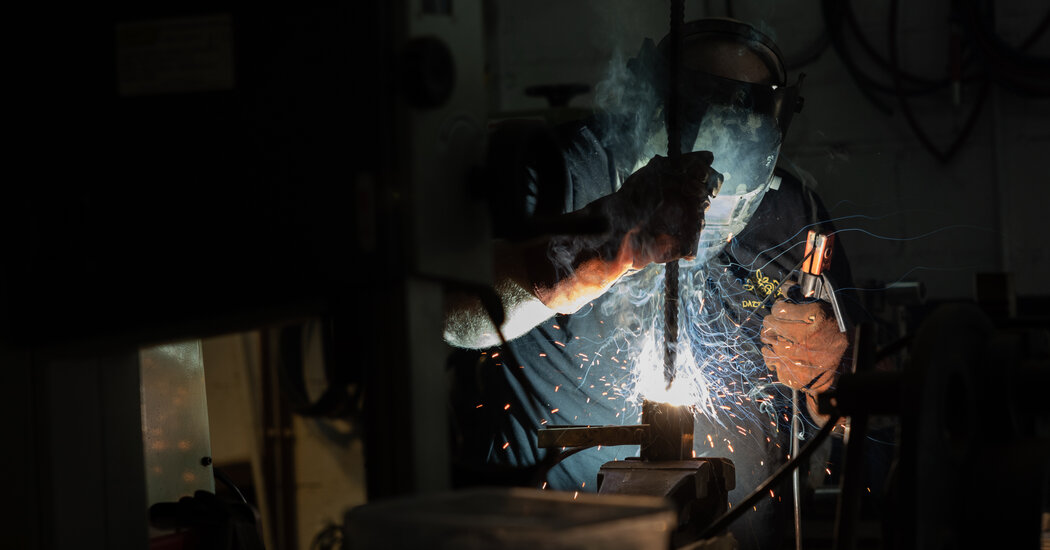
He placed the block into the heated forge and waited about 35 minutes, removing the block when it was molten. “Then we fold it and cut it,” he said. “Fold it over and forge weld it back together again.”
When Mr. Brennan decided it was finished, he said, “It’s €2,500, just for that piece of steel.”
Using the hammer, he shaped the blade and tang (the part of the blade that extends into the handle), a process of heating and hammering that can take two hours or longer, and then left it overnight to cool in the ashes of some burned straw, a traditional Japanese technique.
“Next morning, I remove the knife from the ashes and refine the shape on the grinder,” he said, adding that this step could take all day. Once he is satisfied, though, he heat treats the metal in a specialized oven, and the piece then is “quenched,” dunked in either a special oil or water. “It goes from 800 degrees Celsius to room temperature in a minute,” Mr. Brennan said. “That’s when it becomes a knife. It’s when the blade gets its soul.”
The blade then is placed in a tempering oven at approximately 175 degrees Celsius for about two hours, depending on the steel and its size, to make it hard and flexible. Afterward, the metal is ready for hand polishing with various abrasive substances, including ground diamonds. “This is when the hard work begins,” Mr. Brennan said. “This can take up to four days.”
At this stage, the pattern in the blade was difficult to discern. But, in a process he described as magical, Mr. Brennan dropped the blade into an acid bath and left it there for two minutes.
“The steel goes from a piece of shiny metal to a beautifully pattered piece,” he said. “It’s the moment the steel reveals its identity and becomes a beautiful blade.”






